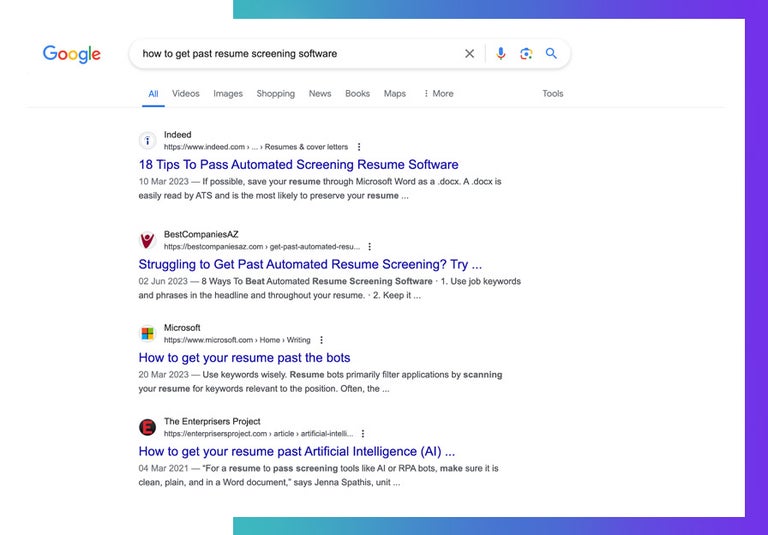Contents
- Why Traditional Hiring Doesn't Work Globally
- The 3 Pitfalls of Global Hiring
- Identify Your Global Superstar
- Your Hiring Revolution
Struggling to find your next great hire? Your local talent pool might be drying up, but the world is full of potential. Discover three reasons why traditional methods fall short when looking globally, and learn three ways to identify top international talent - wherever they're from.
Picture a population larger than Germany, vanishing from the workforce.
That's the reality we're hurtling towards, according to a sobering Korn Ferry study. By 2030, we'll be grappling with a shortage of 85 million skilled workers worldwide – a deficit so large it would rank as the 19th most populous nation on Earth.
This isn't just a HR headache. It’s the final nail in the coffin for location conditional hiring. Looking abroad will be a cornerstone of everyone's hiring strategy very soon.
But, with a bigger pond comes more fish. How do you find that perfect international hire? That one golden needle in a planet-sized haystack.
Here are some tips to help you identify top performers abroad.
Why Traditional Hiring Doesn't Work Globally
Imagine this: Your boss pings you on GChat. Marketing needs a new social media wizard for LinkedIn, and yesterday!
You scramble to write a job description, post it everywhere, and applications start flooding in.
Five days later you're taking a mid-morning swim through 5,000 applications. Sound familiar?
Sure, an ATS and some screening software can help you handle numbers. But with thousands (sometimes tens of thousands) of resumes, how do you find the best fit?
Here's the harsh reality. Traditional hiring methods haven't changed all that much from posting a listing in the newspaper. You write a generalized description, cast your net, and hope for the best.
In 2024, it's just a bigger newspaper (the entire internet), and screening is a bit more sophisticated (fancy software instead of a bored intern with a highlighter).
Traditional hiring methods might be "good enough" for local hiring, but they fall apart spectacularly when your search goes global.
They just weren't built for it.
The 3 Pitfalls of Global Hiring
1. Volume Overload
Sifting through a mountain of applications is overwhelming.
It's easy to miss the best candidates when you're playing chicken with a landslide of resumes. Your everyday screening software is a great level one step. It'll sort through a massive applicant pool and remove some of the clear mismatches.
But here's the catch. Resumes can be easily optimized to beat screening. The barrier becomes almost non-existent when using ChatGPT to pull and insert keywords.
A quick Google search reveals a long list of articles on "how to get past screening software."

As we said, ATS and screening software are level-one solutions.
To level up, we need a better way of cutting through the volume while zeroing in on quality.
2. Comparing Apples to Oranges
Global hiring makes comparing candidate resumes next to impossible.
How do you compare experience at Tokyo Electron with experience at Intel? Is the National University of Singapore better or worse than Northwestern?
Traditional hiring often relies on comparisons based on known reference points. This approach can disadvantage talented people from diverse educational and professional backgrounds.
You might be missing out on your next superstar simply because their resume doesn't fit a local mold.
3. True Skills vs. Resume Hype
Can this person actually do the job? It's a question every recruiter asks while staring down the barrel of an application.
Remember that one hire who looked amazing on paper but turned out to be a creativity black hole during brainstorming? What about that star coder that ended up buggier than last week's takeout?
Traditional hiring methods can leave you vulnerable to the very real resume razzle-dazzle.
According to SHRM, the average cost per hire is nearly $4,700. Menlo Park's Edie Goldberg says the total cost of a new employee could balloon to three or four times their salary. Yikes!
That means hiring someone for a $50,000 position is actually more like adding $150,000 to $200,000 to the bottom line.
Resumes are not good indicators of real skill.
Identify Your Global Superstar
Okay, so we've established that traditional methods aren't cut out for global hiring.
So, what can we do about it? Here are three countermeasures to find those hidden performers.
1. Reduce Volume With Standardized Tests
Say goodbye to location bias and hello to real comparison. Standardized tests are where it’s at!
The Criteria Cognitive Aptitude Test (CCAT) is an overpowered option. It's like a real-world crystal ball for future performance. Not good enough? It only takes 15 minutes.
That means you can have a scientifically backed idea of how well a candidate will do in the long term, 5-minutes before your coffee gets cold. Yes, we fact-checked those numbers.
These tests help cut through volume, assess quality, and allow for easy comparison across diverse backgrounds. An undeniable trifecta for recruiters.
Top Tip: Make sure to adjust your minimum bar for each role - a one-score-for-all approach won't work.
2. Guarantee Job Fit With Skills-Based Hiring
It's time to bin the generic "tell me about your experience" interview questions.
Skills-based hiring puts candidates to the test with relevant, role specific simulations.
Let's look at a graphic designer. Instead of paging through their portfolio, you might present them with a design challenge relevant to your company's needs. This allows you to see their skills in action, assess their problem-solving approach, and get a sense of their creativity.
You also don’t need to compare apples with oranges. Everyone submits their own solution to the same problem. Now you get to compare who does the best job for you.
It's like a test drive. If you hear ticking under the hood and feel sticky breaks, you might not want to buy the car. With skills-based hiring, you can ensure your candidate can actually "walk the walk," not just "talk the talk".
The numbers don't lie. A HiringBranch study found that using skills assessments led to a whopping 400% reduction in bad hires! That's a lot of money saved and wasted time avoided.
You'll never identify the best high-skilled hire if you're looking for the right thing in the wrong place.
3. Interview for Culture Fit
Soft skills are crucial for remote teams, especially when working across cultures.
Structured interviews go beyond technical expertise and put a candidate's personality, communication style, and cultural fit under the microscope. Ask questions that reveal how they handle challenges, adapt to change, and work independently.
Remember, they might code circles around the competition, but if they don't mesh well with your company culture, they won't be around long enough to do it.
Identifying high performers isn't only about what they can do. It's also about how they do it.
Your Hiring Revolution
Using standardized testing, skills-based hiring, and culture-focused interviews, will level up your hiring and help you zero in on the best candidates.
But fitting these steps within your existing candidate journey takes planning and effort.
Crossover has been working on it since 2014. We haven't added standardized tests, skills-based hiring, and cultural fit interviews to our process. We've built our process around them.
Partnering with Crossover means no need to juggle multiple platforms or worry about managing everything alone. It means hitting the ground running and finding the great among the good.
Ready to build your world-class team? Move beyond local limitations and embrace global potential.
Standardized testing, skills-based hiring, and fit-focused interviews can help you identify top talent anywhere in the world. Make the change today!









